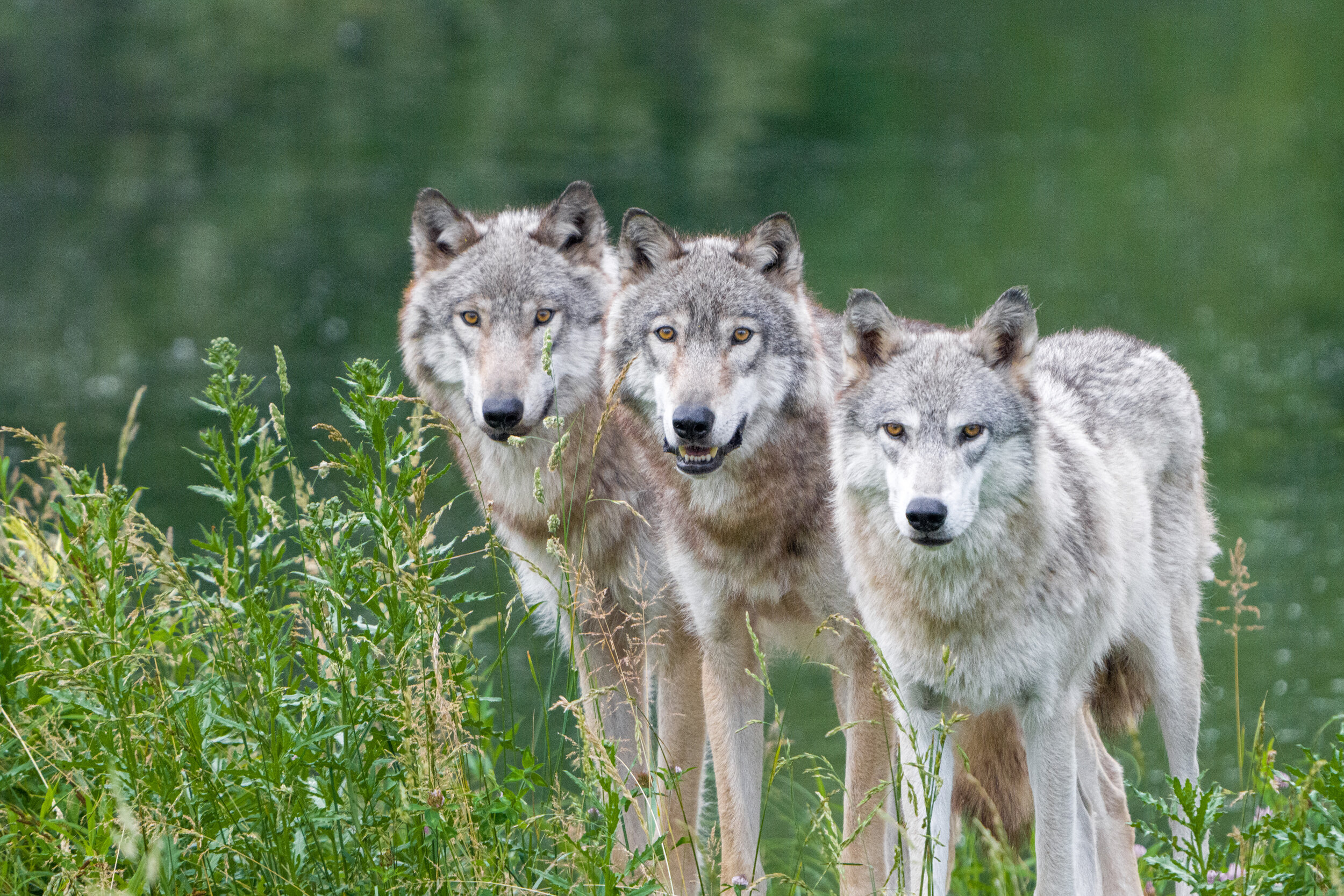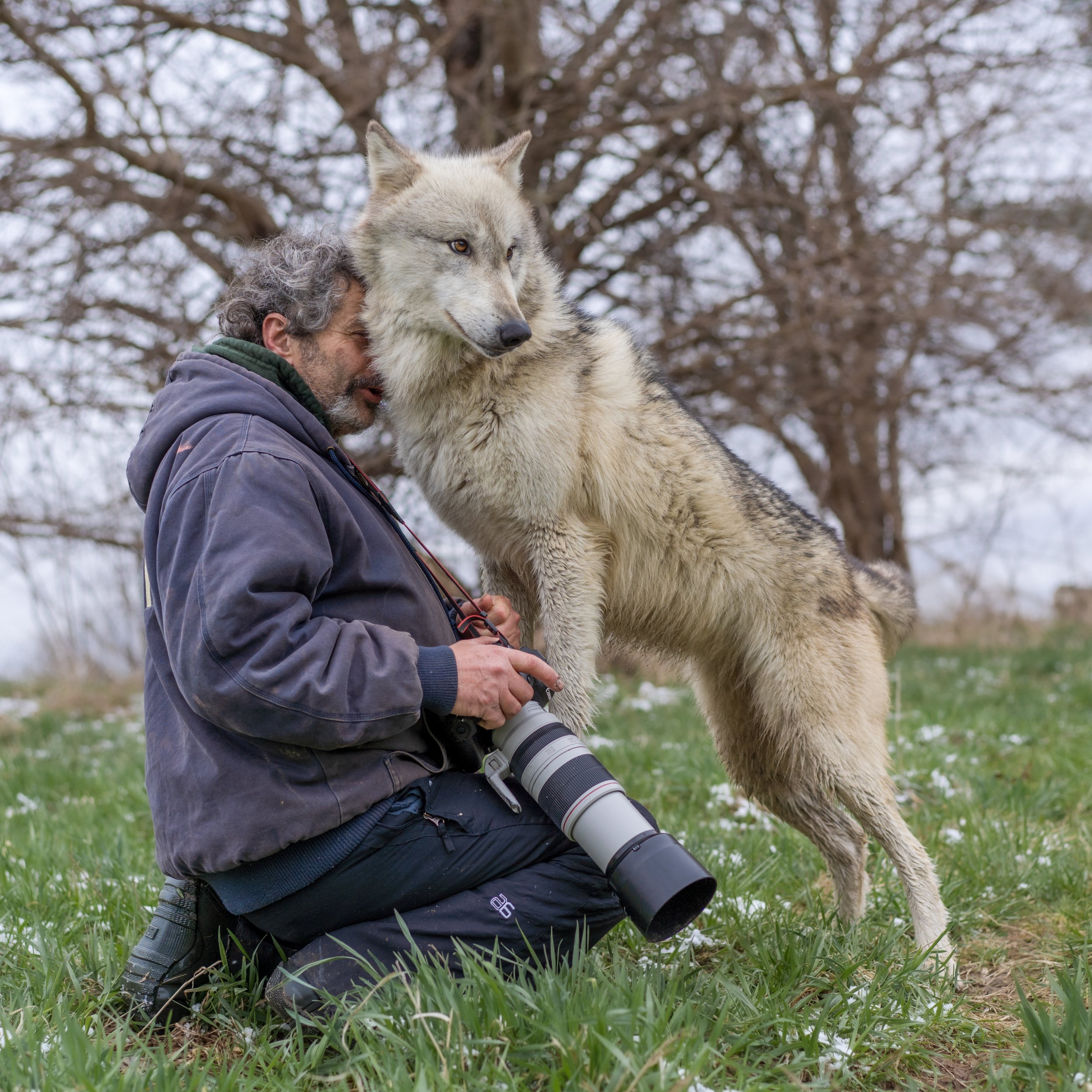Wolf Park Wildlife Sanctuary
There’s a stillness that blankets the air at Wolf Park in the winter—a crisp quiet that makes the wolves’ breaths visible as they exhale into the cold. I didn’t realize it at first, but these weekly visits, starting out as a simple escape from my studies at Purdue, soon became something much deeper. Wolf Park wasn’t just a place to observe animals; it was a sanctuary where I learned the rhythms of nature, the shifting seasons, and the raw, unfiltered beauty of the wild.
Mani and Khewa playing on the ice
The wolves themselves became more than subjects through my camera lens; they became teachers. The calm gaze of Máni, so deliberate and wise, spoke volumes about patience and observation. He would stand at the fence, as though he was as curious about us as we were about him. Aspen, playful and lighthearted, was the one who showed me that even in conservation work, joy and spontaneity have their place. His bounding leaps onto the rowboat, as if he were meant to command it, still bring a smile to my face.
Aspen, Mani, and Khewa waiting for a wild duck to come closer to the edge of the lake
Then there was Khewa, our ‘mud puppy,’ who found happiness in the simplest things—like rolling in a fresh puddle. Her brother, Niko, had his own charm with his childhood stuffed duck obsession, but I always saw more in him—an explorer, a collector of experiences, much like myself. I found something of myself in each of them: Sparrow, the quick learner; Timber, the small wolf with the huge heart; and even the vocal foxes, Scarlette and Joker—each played their role in showing me the need for conservation.
Mani, Aspen, and Khewa looking scruffy in the summer grass.
Through Monty Sloan’s mentorship, I came to understand the true purpose of my camera—to not only capture these moments but to use them to inspire others to care for the natural world. Conservation isn’t a passion that’s ignited by facts or statistics—it’s born in moments like these, when the wind shifts and the wolves howl, when the seasons change and so do their behaviors, and when you realize how connected we all are.
Monty with Sparrow
Wolf Park taught me the deep, poetic dance of nature, one that ebbs and flows with each season, each wolf, and each breath taken in the wild. It is a place of reflection and inspiration, and it was where my love for conservation first took root.
Every week I returned, and every week I learned something new—not just about the wolves, but about the delicate balance of life itself. With every photograph I took, I captured more than just an image. I captured a story—a story of why sanctuaries like Wolf Park are not just important, but essential. They are living, breathing places of hope, where the future of conservation is not just talked about but lived.
Niko, Mani, and Aspen howling at the Khewa across the lake
I left Purdue with more than a degree. I left with a deep understanding of the necessity of wildlife sanctuaries and a desire to dedicate my life to ensuring that the wild remains wild, that future generations can experience the breathtaking beauty of a wolf’s howl on a winter’s night, or the curious gaze of a fox digging for treasures in the earth. Wolf Park wasn’t just where I learned to photograph; it was where I learned to care.








